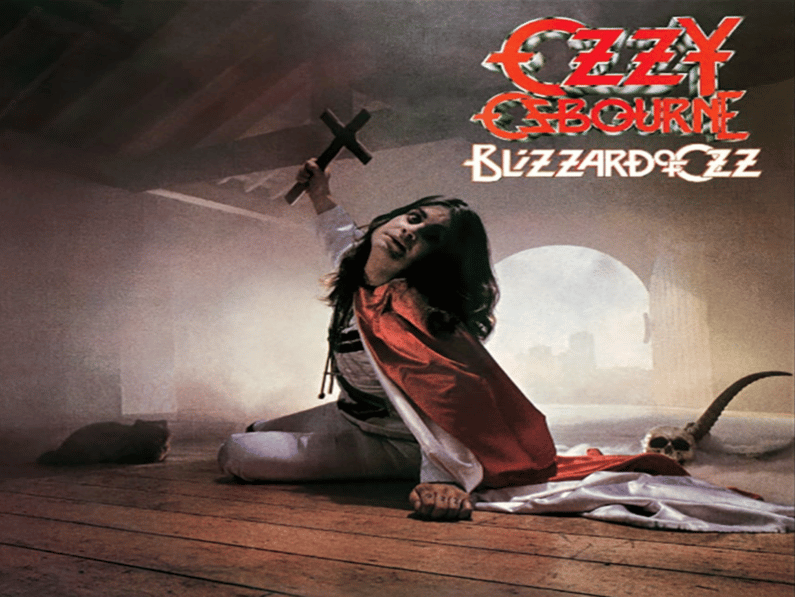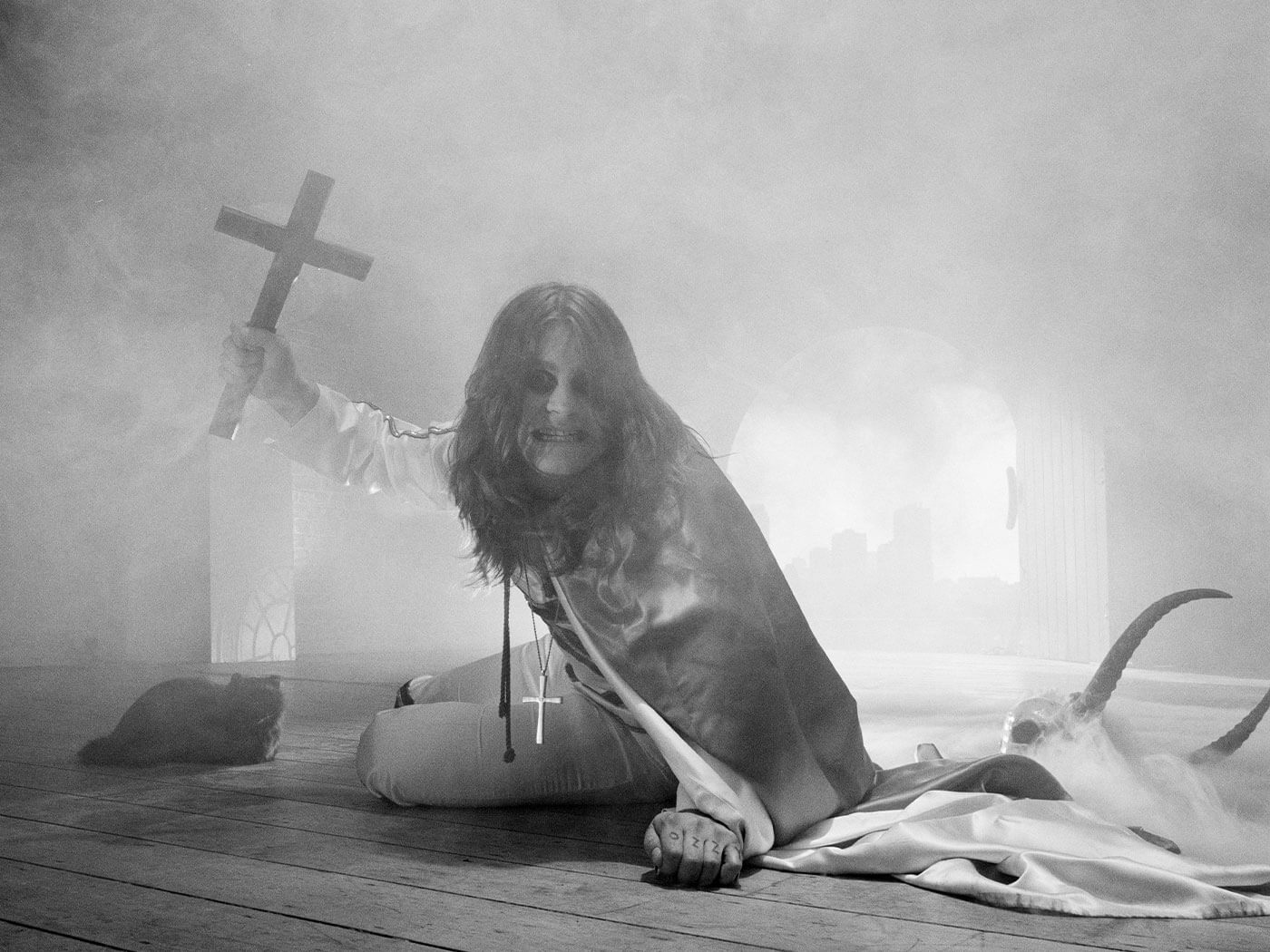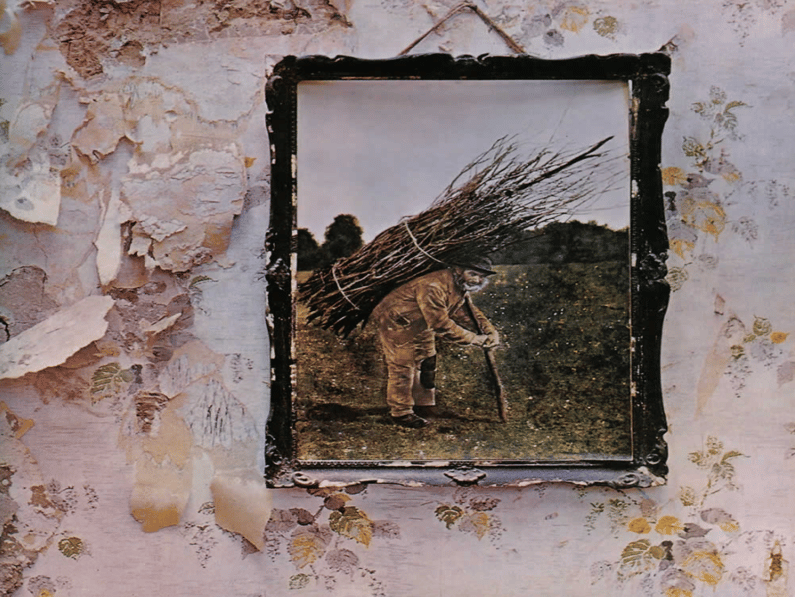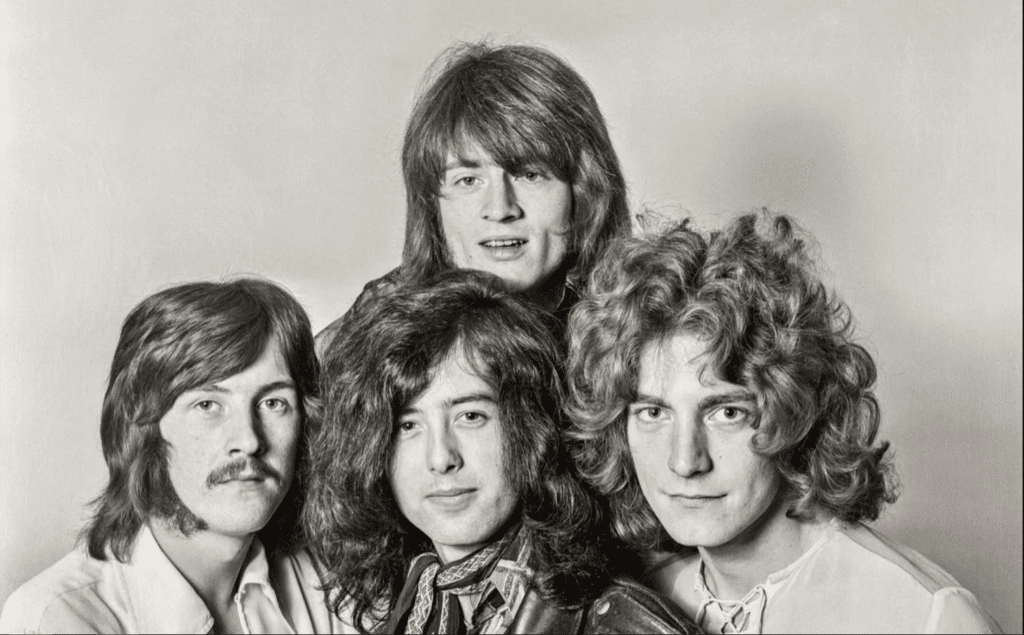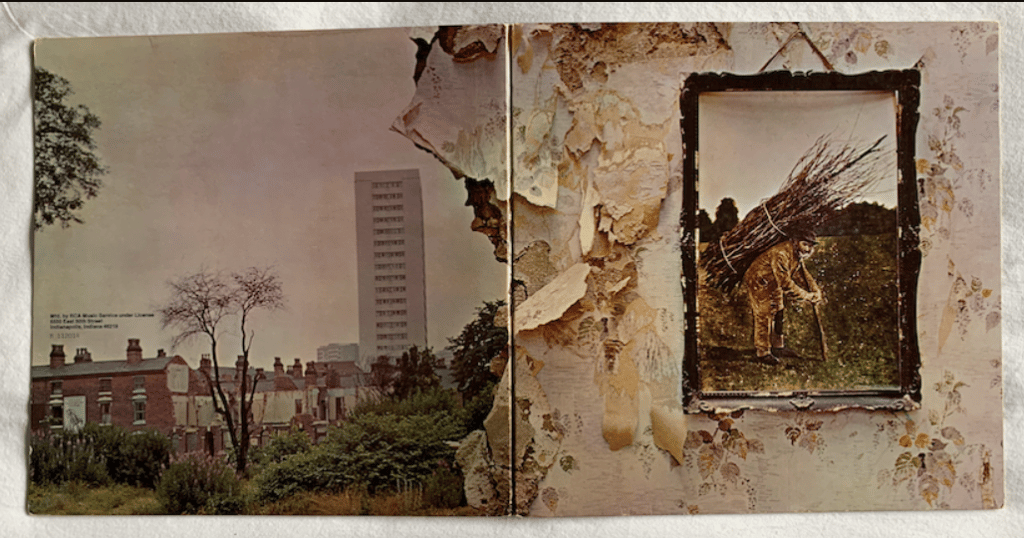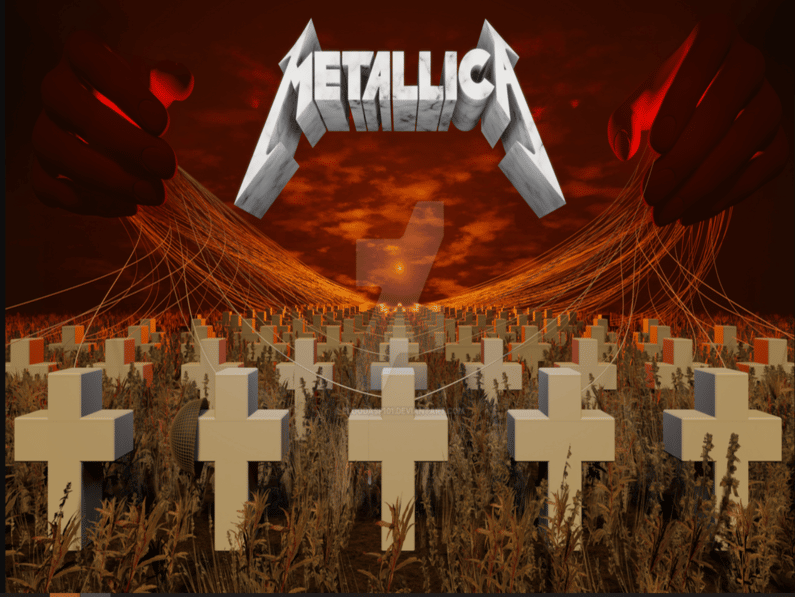
“Master of Puppets”: A Monumental Album that Leaves You Emotionally Charged
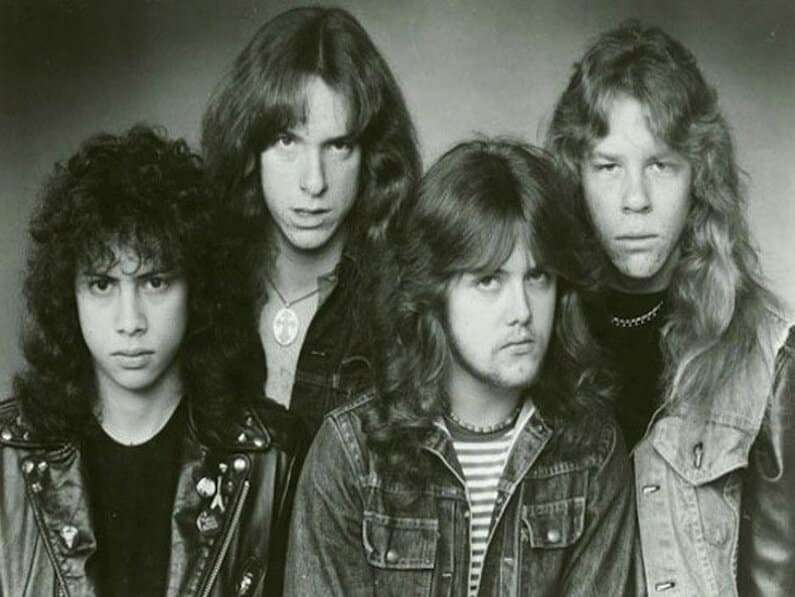
“Master of Puppets” has a special place in my heart. This album was released in 1986 and marked a turning point for Metallica. They were well known for their thrash metal which was so popular then, but this album solidified their position. It’s been years since its release, but fans still go crazy over “Master of Puppets.” From “Battery” to “Damage, Inc, ” this is a masterpiece.
“Master of Puppets” is the first Metallica album I listened to. It immediately hooked me with its powerful sound and thought-provoking lyrics. As a teenager, the themes of rebellion and resistance resonated with me, and I repeatedly returned to the album. It became the soundtrack to my teenage years. It still gives me chills whenever I hear that haunting melody from “Welcome Home (Sanitarium).” “Master of Puppets” has a special place in my musical journey, and I am constantly amazed by its enduring legacy.
“Master of Puppets” Marked a Turning Point for Metallica
On March 3, 1986, Metallica released “Master of Puppets,” a time when the band was at its peak. They had already released two successful albums, “Kill ‘Em All” and “Ride the Lightning.” They were quickly gaining a reputation as one of the leading bands in the thrash metal genre. Master of Puppets” solidified Metallica’s reputation and helped establish them as one of the most influential metal bands in history.
The Making of “Master of Puppets”
Flemming Rasmussen produced, and Michael Ilbert engineered, Metallica’s third studio album, “Master of Puppets” This took place at Sweet Silence Studios in Copenhagen, Denmark.
“Master of Puppets” took several months to record. The band spent long hours in the studio working on the songs and fine-tuning their performances. As part of the recording and mixing process, various microphones and recording techniques were used to capture the band’s sound on analog equipment.
The band also recorded at Morrisound Studios in Tampa, Florida, where they recorded the song “Battery.” George Marino mastered the album at Sterling Sound in New York City.
Metallica’s third studio album, Master of Puppets, was produced by Flemming Rasmussen, a Danish record producer. After working with Metallica on their second studio album, “Ride the Lightning,” Rasmussen was chosen to produce “Master of Puppets.” All because of his experience working with the band and ability to capture their sound.
In addition to shaping the album’s sound and guiding the band’s performances, Rasmussen worked closely with the band during the recording process. In addition, he played a crucial role in the album’s final sound. He oversaw recording, mixing, and mastering.
The album was engineered by Rasmussen, Michael Ilbert, and Morten Lund, with assistance from Flemming’s assistant engineer, Rasmussen. The album was recorded and mixed on analog equipment, using various microphones and recording techniques to capture the band’s sound. George Marino mastered it at Sterling Sound in New York City.
The Album Has Sold Millions Worldwide
Since its release in 1986, Metallica’s third studio album, “Master of Puppets,” has sold millions worldwide. The Recording Industry Association of America (RIAA) has certified the album 8x platinum in the United States. It has also been certified platinum in Canada, 5x platinum in the United Kingdom, and 4x platinum in Australia, among other countries.
A Legendary Album Cover That Has Stood The Test Of Time
Lead singer and guitarist James Hetfield and drummer Lars Ulrich designed the cover art for, “Master of Puppets.” The artwork was inspired by a photograph taken by Michael Pekurny. It depicts a soldier being marched off to war by two other soldiers, with the soldier holding a giant puppet in his hands.
They used the image and its themes of control and manipulation as inspiration for the album’s cover art. Hetfield and Ulrich modified the picture to include the band’s logo and the album title. In addition, the cover was given a more dramatic and striking appearance by incorporating red and yellow colors.
The cover art for “Master of Puppets” has become one of heavy metal history’s most iconic and memorable images. It has been widely imitated and parodied by other artists. In addition to being controversial, some critics have argued that it promotes violence and militarism. Even despite these debates, Metallica’s cover art for “Master of Puppets” has remained a timeless symbol of Metallica’s music.
The Effect This Had On My Youth
Metallica marked a turning point for me when “Master of Puppets” was released. I had been a fan for several years, but this album sealed the deal. It became the soundtrack to my teenage years, and I listened to it constantly. It has stayed with me throughout the years. I still listen to it often, always finding something new to enjoy.
Metallica tackles rebellion, addiction, and the dangers of blindly following authority in “Master of Puppets.” With lyrics warning against becoming a pawn in the hands of a powerful force. The title song, “Master of Puppets,” addresses the dangers of drug addiction. The songs “The Thing That Should Not Be” and “Disposable Heroes” also explore resistance and rebellion against oppressive forces.
The themes of “Master of Puppets” have always been essential to making the album so powerful. As a teenager, the pieces of rebellion and resistance resonated with me. Because I was drawn to these topics, I would listen to the album’s lyrics and ideas. As an adult, I still find myself returning to the album and discovering new layers of meaning in its lyrics. Whether it’s the cautionary tale in “Master of Puppets” or the anti-war message in “Disposable Heroes,” these themes are still as important today as they were when I was younger.
Battery
“Battery” is the opening track on Metallica’s “Master of Puppets” album. It is one of the band’s most iconic and enduring songs. During the song, Hetfield talks about unleashing a “battery” of anger and frustration on the world in a tone that perfectly matches the song’s heavy, thrashing riffs. The lyrics are delivered in a snarling, aggressive style.
I’ve always loved the song “Battery” from Metallica’s “Master of Puppets” album. The combination of powerful lyrics and intense riffs is unbeatable, and the adrenaline rush it provides can’t be beaten. The song’s themes of aggression and violence resonate with me, which is why I sing along whenever I hear it. Whether I’m driving or working out, “Battery” is a song that always gets me pumped up. So every time I listen to it, there’s no doubt I feel an exhilarating excitement.
Master of Puppets
“Master of Puppets” is the title track of Metallica’s “Master of Puppets” album and is one of the band’s most enduring songs. In the song’s lyrics, James Hetfield sings about how drugs can turn people into pawns in the hands of a powerful force, which discusses the dangers of drug addiction. In tandem with the heavy, thrashing riffs of the song, the lyrics are delivered in a snarling, aggressive style.
“Master of Puppets” is one of the album’s most influential and thoughtful songs. The lyrics, which warn against drug addiction, always strike a chord with me, and I find myself singing along every time I hear them. The powerful vocals and crushing riffs are unbeatable, and the song has a way of getting me pumped up to take on the world. Whether in my car or at the gym, “Master of Puppets” is a song that always gets me going. I can’t help but feel exhilarated every time I hear it.
Several films and television shows have featured “Master of Puppets.” Here are a few examples:
The 2004 film “Dawn of the Dead” scene where the main characters try to escape zombies features “Master of Puppets.”
When the main character is training in the gym in the 2010 film “The Fighter,” “Master of Puppets” plays.
In the 2016 film “Suicide Squad,” “Master of Puppets” is played during a scene in which the main characters battle villains.
“Master of Puppets” is played during a montage of the main characters traveling and fighting monsters in the TV show “Supernatural.”.
Most recently the track has gone viral in pop culture due to the Netflix series Stranger Things and in the Battle Royale style game Fortnite
As you can see, “Master of Puppets” has been used in various films and television shows, often in scenes involving action or intense moments. These scenes are ideally suited to their powerful sound and aggressive lyrics, and it has become a popular soundtrack choice for films and television shows.
The Thing That Should Not Be
One of Metallica’s most iconic and enduring songs is “The Thing That Should Not Be” from their “Master of Puppets” album. Hetfield sings about standing up against oppressive forces, with the lyrics dealing with themes of rebellion and resistance. Throughout the song, the lyrics are delivered in an aggressive, snarling style that perfectly combines with the heavy riffs.
“The Thing That Should Not Be” has been one of my favorite songs on “Master of Puppets” ever since it came out. I love the lyrics, which encourage resistance against oppressive forces. Every time I hear this song, it motivates me to take charge and do what needs to be done to achieve my goals. The combination of powerful lyrics and crushing riffs makes this song unbeatable. It always gets me pumped up to take on the world. Whether driving in my car or working out at the gym, this song is a go-to for a quick burst of energy that keeps me strong through anything. Hearing the opening riff gets me pumped up enough to jump into anything with gusto!
James Hetfield sings about standing up against oppressive forces in the song’s lyrics. It deals with themes of rebellion and resistance against oppressive forces. The lyrics are delivered in a snarling, aggressive style that perfectly matches the heavy, thrashing riffs of the song.
The song lyrics are based on the H.P. Lovecraft story “The Shadow Over Innsmouth,” which describes a group of aquatic monsters taking over a town. Several lines in the song evoke the horror and terror of Lovecraftian mythology, including “Crawling Chaos, underground/The portal opened, the power sucked down” and “From the depths of hell it’s drawing near/Feasting on the souls of the living fear.
Welcome Home (Sanitarium)
Among Metallica’s most enduring and iconic songs is “Welcome Home (Sanitarium)” from “Master of Puppets.” James Hetfield sings about a person being institutionalized in a sanitarium in the song’s lyrics, which deal with themes of insanity and mental breakdown. In addition to the heavy, thrashing riffs, the lyrics are delivered in a snarling, aggressive style.
The lyrics to this song are narrated by someone who is losing their mind and has been committed to a mental institution. They describe the experience with lines like “Sanity is beyond me” and “Still some realm I’ve yet to tread,” which capture the sense of confinement and isolation they’re experiencing. However, with this dark subject matter, the lyrics also convey hope, with lines like “No more can they keep us in/Listen to my voice and see/We are coming back again,” suggesting that the person is actively fighting for freedom and sanity.
Welcome Home (Sanitarium) is one of the most haunting, thought-provoking songs from Master of Puppets. The lyrics speak to a person struggling with mental illness and are poignant and relatable. Combined with the powerful riffs, the song is unbeatable and has a way of getting me pumped and ready to take on the world. Whether driving in my car or working out at the gym, Welcome Home is a song that always excites me. I can’t help but feel a sense of exhilaration every time I hear it.
Disposable Heroes
Referencing themes of war and the dehumanization of soldiers, “Disposable Heroes” is one of Metallica’s most enduring songs. James Hetfield sings about using and discarding soldiers in the song, claiming that “soldiers are just another cog in the war machine.” Lines like, “I won’t follow orders, I won’t give in,” suggest hope for those who refuse to be used and discarded.
In my opinion, “Disposable Heroes” has always been one of the more influential and thought-provoking songs on the “Master of Puppets” album. The lyrics depict soldiers as disposable tools at the mercy of those in power and are profoundly poignant and resonate with me.
Leper Messiah
As one of Metallica’s most enduring and iconic songs, “Leper Messiah” is featured on their “Master of Puppets” album. The lyrics of the song deal with religious hypocrisy and the dangers of blindly following authority, with James Hetfield singing about how people can be manipulated and exploited by those who claim to be holy or righteous.
Orion
My favorite is “Master of Puppets,” but Orion is a close second. Cliff’s bass work is easily mistaken for guitar due to the style and finesse of his two solos. The first solo starts at 1:42 and lasts until 2:13. The second solo starts at 6:36 and lasts until 6:55 after the bass interlude. He achieved these organ-like sounds using a wah-wah pedal on his bass, a Leslie speaker, and delay effects. James Hetfield’s left arm is even tattooed with the notes for the bass part in the middle of the song.

Damage Inc.
Damage Inc. is a song that deals with violence and destruction in a thoughtful and meaningful way. The lyrics explore humanity’s destructive nature, and the music inspires me to take on the world. For example, the songs note that “chaos is the law” and “the beginning of everything.” They also include lines like “We are the priests, chosen few,” which talks about how humans are willing to do anything for power and control, as well as “We’ll kill and die for those who say they own us,” which emphasizes our willingness to tear up the Earth to be in control. Another line mentions violence and destruction, saying, “We’re gonna wreak havoc” before listing destruction techniques such as arson, burglary, mass homicide, and genocide- all things humans can do if we lose control or become unrestrained figures of violence.
Thoughts and Insight Into This Iconic Piece of Art
I believe the album “Master of Puppets” is a true masterpiece in heavy metal music and should be heard by all fans. Each song delivers a crushing mix of heavy riffs, powerful vocals, and thought-provoking lyrics, making the album a powerful and thought-provoking listening experience. This album’s music always energizes and inspires me, whether it is “Battery” or “Disposable Heroes.”
It tackles complex and thought-provoking themes uncompromisingly and unapologetically, which is one of my favorite things about “Master of Puppets.” The lyrics on this album are always powerful and thought-provoking, whether they deal with dehumanizing soldiers in “Disposable Heroes” or blindly the following authority in “Leper Messiah.”
The Lasting Legacy of This Powerful Metal Staple
Among the most memorable albums of all time is “Master of Puppets,” which I consider one of the greatest. From start to finish, the album is a masterpiece of heavy metal music, with each song delivering a powerful punch and tackling thought-provoking themes with an uncompromising and unapologetic attitude.
“Master of Puppets” is one of my favorite albums because the heavy riffs, vocals, and thought-provoking lyrics combine to create a cohesive and powerful listening experience. I’m always left feeling energized and inspired by the music on this album, no matter what song I’m listening to. Whether it’s “Battery” with its heavy riffs or “Disposable Heroes,” which has thought-provoking lyrics, they’re both emotionally engaging. They have that “just right” mix of instrumentals, vocals, and lyrics.
I believe that “Master of Puppets” is a true classic of heavy metal and should be in every fan’s CD collection. It will stand the test of time and continue to be loved for years. Suppose you’re a heavy metal fan looking for an outstanding album. In that case, I highly recommend listening to “Master of Puppets.” We’ll always love this album; it’s one of the best-recorded albums.

